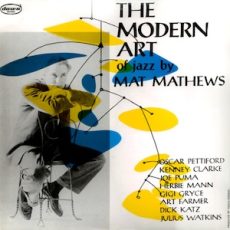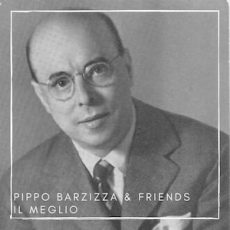
Daily Dose Of Jazz…
Mat Mathews was born Mathieu Hubert Wijnandts Schwarts on June 18, 1924 in The Hague, Netherlands and learned to play accordion while the country was still under the Nazi rule during World War II. It was after hearing Joe Mooney on a radio broadcast after the war that he decided to play jazz.
Moving to New York City in 1952, Mat formed a quartet which included Herbie Mann. He also worked and or recorded with Kenny Clarke, Art Farmer, Percy Heath, Carmen McRae, Oscar Pettiford, Joe Puma, Milt Jackson and Julius Watkins.
He worked mainly as a session musician in the late 1950s, and returned to the Netherlands in 1964, where he worked as an arranger, session musician, and record producer. In the 1970s, he again worked in the United States with Charlie Byrd, Doug Duke, Marian McPartland, and Clark Terry.
Accordionist, arranger, record producer Mat Mathews, who recorded eight albums as a leader, died on February 12, 2009 in Clarence Center, New York.
More Posts: accordion,arranger,bandleader,history,instrumental,jazz,music,record producer

Daily Dose Of Jazz…
Giuseppe “Pippo” Barzizza was born on May 15,1902 in Genova, Italy. He was a child prodigy and at age six he entered the Camillo Sivori Institute to study violin, quickly passing the exam and taking his first award. He could hardly read words but he was already able to write a Mozart symphony without error.
After attending primary and secondary schools he went to Cristoforo Colombo High School, where he studied violin at the Conservatory. Listening to his father’s phonograph, Pippo developed a passion for classical and symphonic music. He became skilled in mathematics and decided to follow mathematical studies, graduating as an engineer.
Barzizza also studied harmony, counterpoint, composition, and instruments. He focused on the piano until 1933, followed by the violin, banjo and the trumpet section. During this period he was the lead violinist at Politeama and performed music for silent movies at the cinema near his home.
By seventeen he had stopped his violin studies for the pursuit of conducting and composition. For the next four years he performed on ships and for orchestras in Genova. However, it was in New York City he first heard jazz and swing music. Through the 1920s Pippo became a skilled arranger, joined an orchestra, served in the Italian Army and founded a military orchestra.
His first line up was playing violin for Blue Star Orchestra, then he conducted the Cetra Orchestra, recorded during the Thirties for Fonit, Columbia, La Voce del Padrone, Odeon, Brunswick and Fonotipia record labels. Post World War II he played on soundtracks and counducted the Modern Orchestra. Retiring from music in 1960 he taught music, established a recording studio in his home
At the age of 92, composer, arranger, conductor and music director Pippo Barzizza, who was active from 1924 to 1960 playing violin, piano, saxophone, banjo, and accordion, died on April 4,1994 in Sanremo, Italy.
More Posts: accordion,arranger,bandleader,banjo,composer,conductor,piano,saxophone,violin

Daily Dose Of Jazz…
Mihály Tabányi was born on February 1, 1921 in Pilis, Hungary. He began his musical studies on the violin at the age of five , and then on the piano at the age of eight. From 1933, he studied accordion for seven years with Lajos Bobula, while attending the Academy of Music and graduating in organ and gordon due to no accordion department. He then became a church organist.
1940 saw Mihály winning first place in the first National Accordion Competition as a professional. Two years later he won the National Accordion King Competition and the Tango Accordion Olympics. He later made his first jazz recordings for the Radiola Electro Record label.
Before 1945, he mainly performed in trios and later with György Cziffra with whom he played in the Bristol Hall orchestra, before founding his own band called Pinocchio that included two guitarists, Elek Bacsik and Attila Zoller, with which he performed in many countries. After 1945, he expanded the trio to eight members. In 1946 he received a contract in Switzerland and two years later he founded his own accordion school. From 1949 he played with his band at the Emke Café for seven years before disbanding in 1956.
In 1950 he was awarded the title of the country’s most popular jazz musician. In 1957 he made the first Hungarian West Coast recording for the Qualiton label. From 1960 he spent years in West Germany and gave concerts in many European countries and made several large formation recordings. He worked with many singers that immortalized his playing on their records. In 2017, the National Accordionist Society established the Mihály Tabányi Award.
Accordionist Mihály Tabányi, who was an Emerton-award winner and the most popular accordionist of the Forties and Fifties, died on July 2, 2019 at the age of 98.
More Posts: accordion,bandleader,history,instrumental,jazz,music

The Jazz Voyager
New York is beckoning the Jazz Voyager to leave the cold of the Midwest to experience the familiar cold of the Big Apple for two new events. The first is a visit to a fresh old fashioned haunt that’s tucked away in Lefferts Garden called Bar Bayeux. Though it may be familiar, I’m desirous of warmer southern temperatures but the jazz and new adventures never stop.
The second event has me in the company of international recording pianist, organist, and accordionist Gary Versace who is one of the busiest and most versatile musicians on the international jazz scene. Leading this quartet date, he has been featured in bands of John Scofield, Maria Schneider, John Abercrombie, Anat Cohen, Al Foster, Regina Carter, Kurt Elling, Madeleine Peyroux, Matt Wilson, Ingrid Jensen and many others.
Bar Bayeux is located at 1066 Nostrand Avenue, Brooklyn, NY 11225. For more information visit https://www.barbayeux.com. No cover, one drink minimum but tips for musicians are encouraged.
More Posts: accordion,adventure,club,genius,jazz,music,organ,piano,preserving,travel

Daily Dose Of Jazz…
Karen Street was born on December 13, 1959 in the United Kingdom (UK) and started playing the accordion at the age of 7. She went on to study at Bath University, RWMCD and in London, England with the late Ivor Beynon, a pioneer of the classical accordion. She studied music at Welsh College of Music and Drama and Guildhall School of Music. She became the British Virtuoso Champion in 1981/2 and competed in the Coupe Mondiale World Championship in Hamburg, Germany and Folkstone, UK.
Karen has created a niche for herself in the UK jazz scene and is a regular member of Mike Westbrook’s groups, works with Tim Garland as well as part of Lammas playing alongside Geoff Keezer, Joe Locke and Avishai Cohen.
As a saxophonist Street was a member of the all girl saxophone quartet The Fairer Sax and is now a member and co-leader of Saxtet with her husband Andy Tweed.
Karen’s composing is specialized by writing music for the saxophone, from solos to large ensembles. Her composition for solo accordion, In The Ballroom With The Rope, took first prize at the London Accordion Festival, Composition Competition in 2001. The same year she released her debut recording, Finally A Beginning.
Besides jazz, Karen has played across genres with the likes of Bryan Ferry, Grace Jones, Andrea Bocelli, Kate Westbrook, BBC Philharmonic, Icebreaker, and the Strictly Come Dancing Live Tour band for three seasons.
Accordionist, saxophonist and flutist Karen Street is currently a freelance musician playing across a wide variety of genres.
More Posts: accordion,flute,history,instrumental,jazz,music,saxophone






